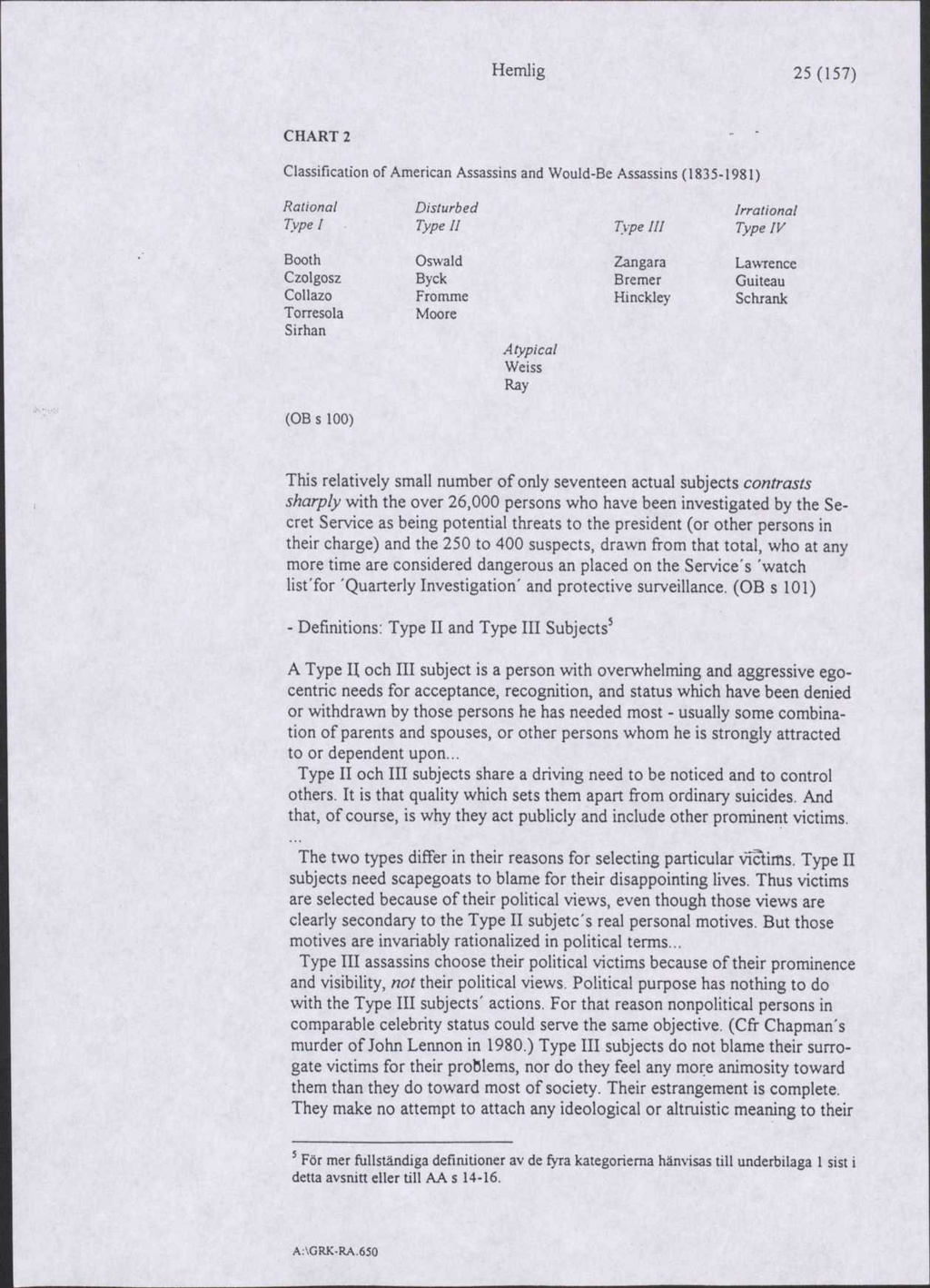)
CHART 2
Classification of American Assassins and Would-Be Assassins (1835-1981)
Rational Type 1
Disturbed Type 11
Type III
Irrational Type IV
Booth Czolgosz Collazo Torresola Sirhan
Oswald Byck Fromme Moore
Zangara Bremer Hinckley
Lawrence Guiteau Schrank
Atypical Weiss Ray
(OB s 100)
This relatively small number of only seventeen actual subjects contrasts sharply with the over 26,000 persons who have been investigated by the Secret Service as being potential threats to the president (or other persons in their charge) and the 250 to 400 suspects, drawn from that total, who at any more time are considered dangerous an placed on the Service's 'watch list'for 'Quarterly Investigation' and protective surveillance, (OB s 101) - Definitions: Type II and Type III Subjects
A Type II och III subject is a person with overwhelming and aggressive egocentric needs for acceptance, recognition, and status which have been denied or withdrawn by those persons he has needed most - usually some combination of parents and spouses, or other persons whom he is strongly attracted to or dependent upon...
Type II och III subjects share a driving need to be noticed and to control others. It is that quality which sets them apart from ordinary suicides. And that, of course, is why they act publicly and include other prominent victims.
The two types differ in their reasons for selecting particular victims. Type II subjects need scapegoats to blame for their disappointing lives. Thus victims are selected because of their political views, even though those views are clearly secondary to the Type II subjetc's real personal motives. But those motives are invariably rationalized in political terms....
Type III assassins choose their political victims because of their prominence and visibility, not their political views. Political purpose has nothing to do with the Type III subjects' actions. For that reason nonpolitical persons in comparable celebrity status could serve the same objective. (Cfr Chapman's murder of John Lennon in 1980.) Type III subjects do not blame their surrogate victims for their problems, nor do they feel any more animosity toward them than they do toward most of society. Their estrangement is complete. They make no attempt to attach any ideological or altruistic meaning to their
5
För mer fullständiga definitioner av de fyra kategorierna hänvisas till underbilaga 1 sist i detta avsnitt eller till AA s 14-16.
